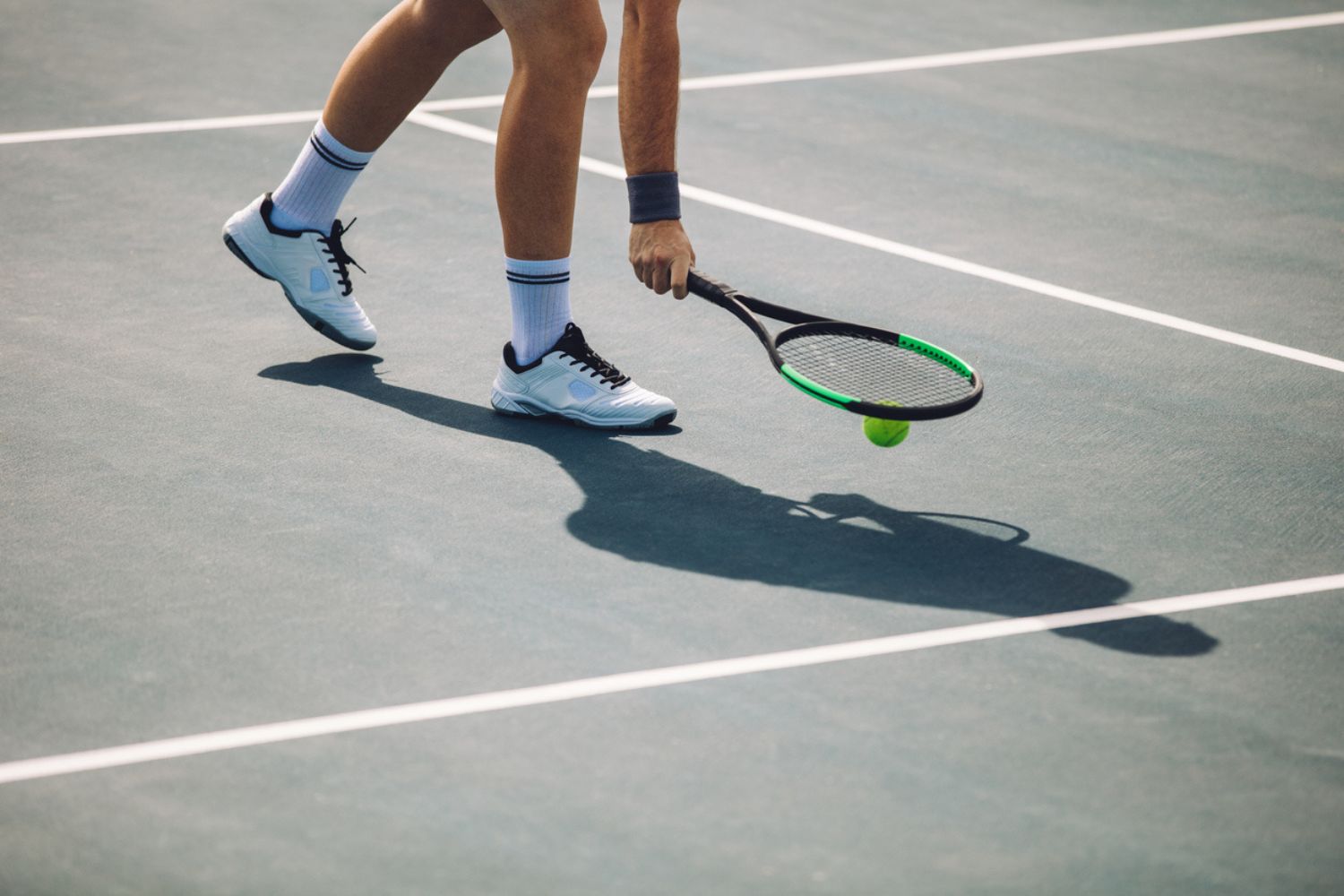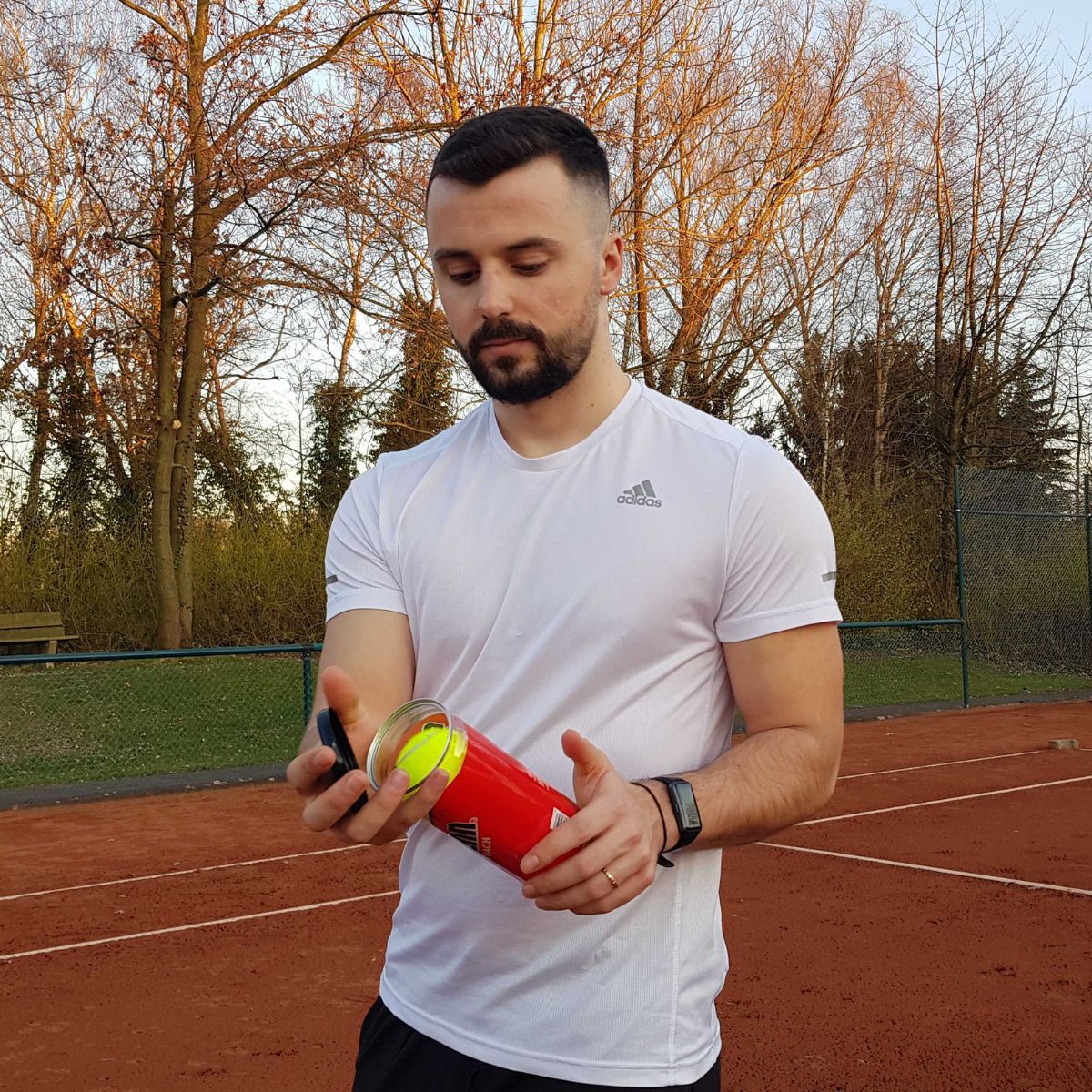One of the most stressful things for beginners could be the shopping experience for their first set of tennis strings. With so many options and different kinds of materials, it can make anybody’s head spin while trying to choose the best type of tennis strings. Worry no more; in this guide, we will explain everything necessary about different types of tennis strings.
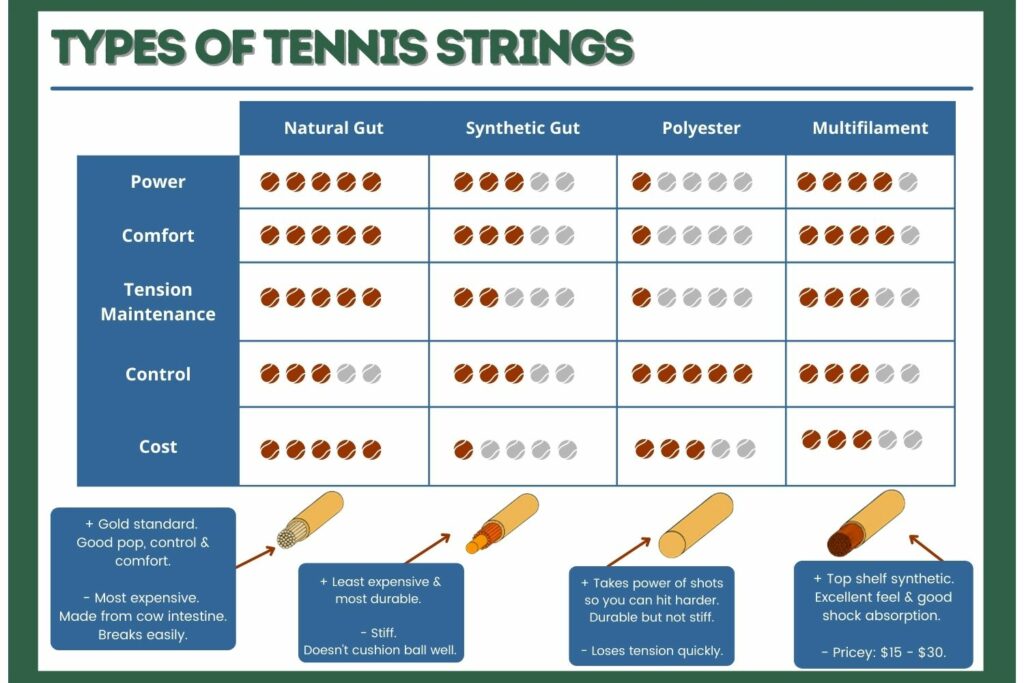
This is probably one of the most important lessons in tennis because strings greatly impact the racket’s performance on the court and, more often than not, even the game’s end result. It is important to learn about other factors, such as tension, gauge level, and restringing process, as these, too, will play an important role in how you connect with the racket. Keep scrolling!
Natural Gut Strings
Natural gut strings are one of the most popular options among avid tennis players. As the name suggests, they are made of the animal intestine, more specifically, the cow’s gut. To produce a single pair of these tennis strings, the manufacturers undergo a complicated process that requires hard and intensive labor. That’s the main reason why these types of tennis strings are also the most expensive option on the market.
However, their many advantages make players overlook the price tag. The best feature of the natural gut strings is, without a doubt, the superior feel they provide, which makes the racket feel like an extension of the player’s hand on the court.
These strings are very elastic and responsive due to their unique structural design. They can also generate incredible power levels, which you can easily tap into.
The natural gut is known to hold the racket tension better than any other string for longer periods, helping the player to stay more consistent with the game’s pace and rhythm. They are very comfortable to play with and can even be a great option for those dealing with injuries or tennis elbow conditions.
Natural gut strings are generally more forgiving, absorb harsh vibrations better, and are easier on the wrist, shoulder, and arm.
However, they generate less spin and provide less control than other options, which can be a serious problem if you rely on these features for your strategy. Natural gut strings also tend to break faster, meaning that you’ll have to pay salty prices to keep replacing them. They can suit a wide range of players; however, if you are a fresh beginner, some more affordable alternatives will do the job just fine.
Advantages
- Superior feeling
- High levels of power
- Maintain tension better
- Responsive
- Extra comfort
- Absorb the harsh vibration
Disadvantages
- Expensive price
- Short lifespan
- Reduced spin potential
- Less control
Synthetic Tennis Strings
Synthetic tennis strings are made of various materials, most predominantly nylon. They are a great starting point for beginners due to the versatility of features and economical cost. These strings have a solid construction design, making them responsive and durable. They are more resistant to breakage or other damage, meaning you won’t need to replace them often.
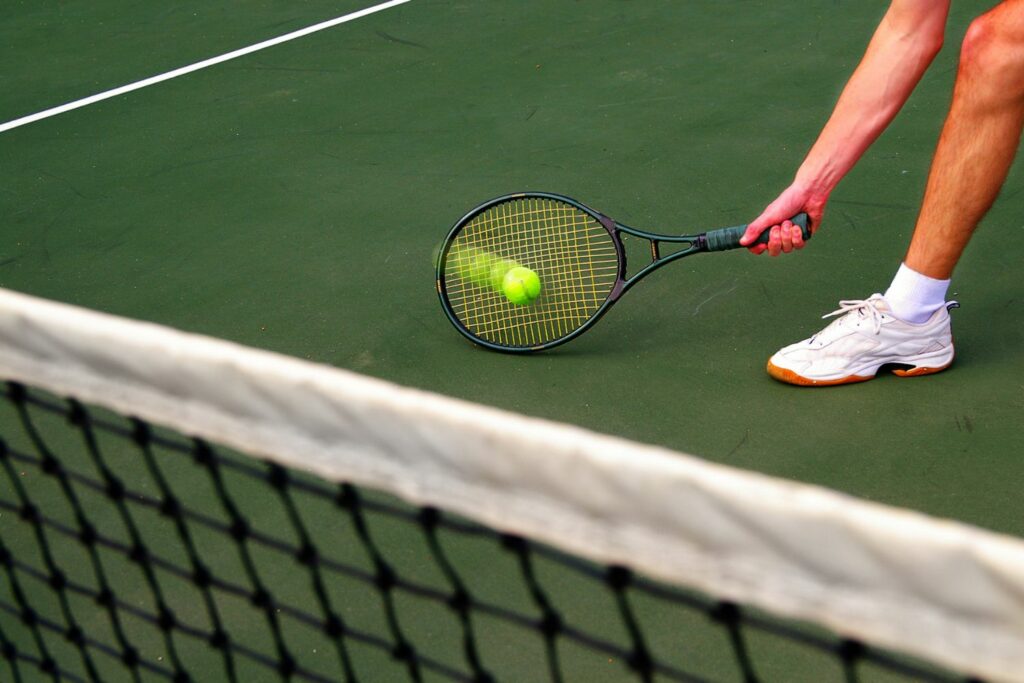
One thing is for sure; synthetic string will last you for a long time. While these types of tennis strings are semi-firm, they are also quite comfortable for the arm.
Synthetic strings can generate heavy spin and a good amount of easy power, making them suitable for a wide range of players. They do a good job at maintaining tension for more consistency throughout the game.
However, they are not the best type of tennis strings for you if you are a competitive player looking for that wow factor. The synthetic gut can only provide an overall average performance on the court without excelling in any of its features.
The feeling is often muted, making connecting with the racket more challenging. However, the synthetic strings come at favorable prices, making them very appealing for beginners or recreational players that are aiming for a learning experience.
Advantages
- Versatile feature
- Economical prices
- Extra durable
- Comfortable for the arm
- Spin potential
- Easy power
- Maintain tension well
Disadvantages
- Average performance
- Not suitable for competitive players
- Muted feeling
Polyester
Polyester strings had risen in popularity since they were first introduced on the world stage in 1997 by the famous Brazilian player Kuerten when he took home the French Open tournament trophy. Many were skeptical at first, but soon polyester strings started to appeal to more and more players as the game became even more competitive.
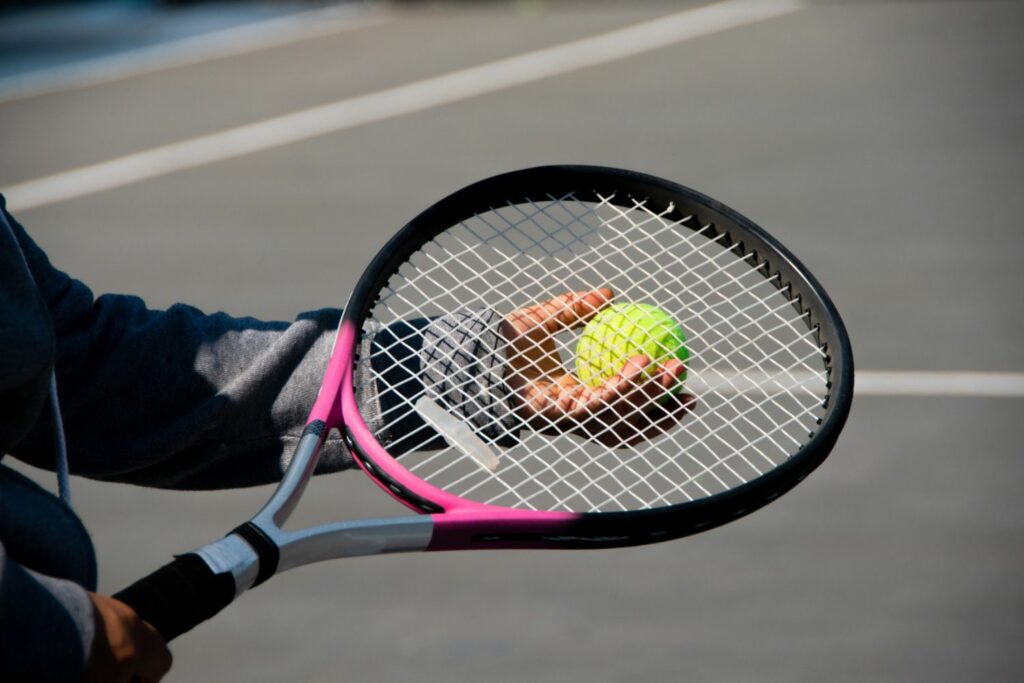
These types of tennis strings offer ultimate control, making it easier to redirect the ball and hit targets with accuracy throughout the game. Synthetic strings also provide an incredible spin potential, which is what you need if you have an aggressive approach to the game and heavily rely on generating topspin to close off points.
Overall, polyester strings offer excellent performance and are a great choice, even for competitive matches at a professional level.
Furthermore, they are extra durable and come at reasonable prices. However, synthetic gut strings come with some major disadvantages, which can be a dealbreaker for some players. They noticeably lack power and consistency and don’t hold tension well.
Since they have a firm construction, synthetic gut strings tend to be very harsh on the arm, where you will feel the harsh vibrations and shock impact almost immediately. That’s why we recommend you stay away from these types if you have sensitivity issues or still are in a beginner’s phase.
Synthetic gut strings would be a great option for advanced players who have the right skills and physical power to maximize performance.
Advantages
- Heavy spin
- Ultimate control
- Extremely durable
- Reasonable prices
- Great overall performance
- Suitable for competitive matches
Disadvantages
- Low powered
- Don’t hold the tension well
- Harsh on the arm
- Not beginner friendly
Multifilament
Multifilament tennis strings are made of synthetic materials to mimic natural gut features and performance. To produce a single string, thousand of synthetic filaments microfibers are woven together and then enhanced with a protective layer around it. Just like the natural gut, these strings are very soft and elastic. They can provide similar performance and various features but with fewer disadvantages.
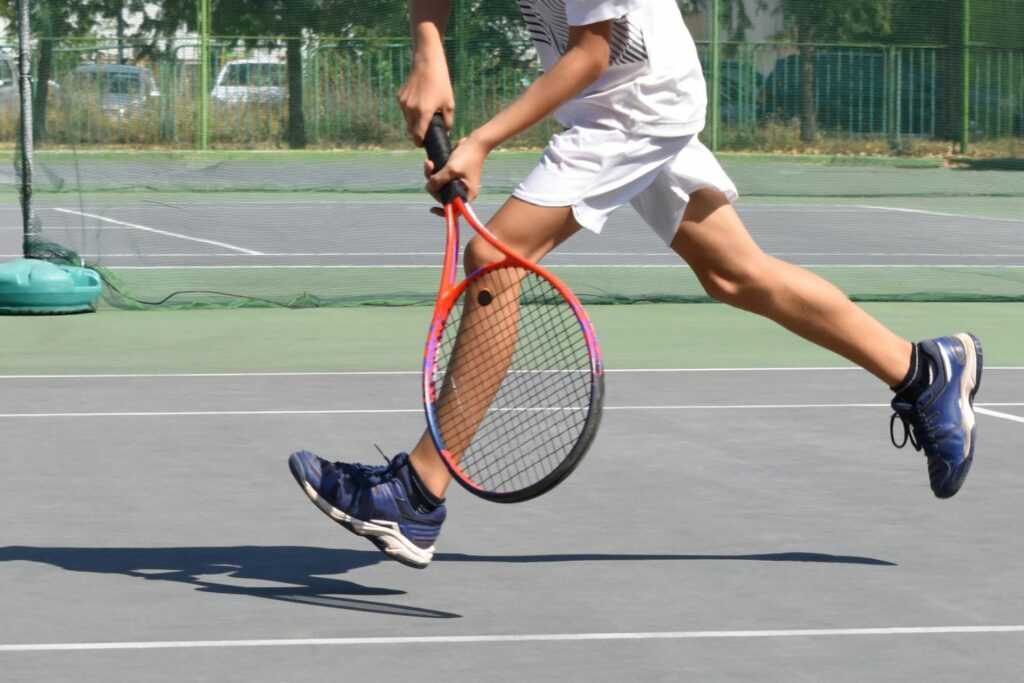
Multifilament strings offer a high power potential, which a player can tap easily into for that extra ball push without spending much of the body’s energy. The plush and clean feeling at contact is one of the best features of these strings that makes the game more fun while allowing the player to connect faster with the ball.
They do a good job at holding tension and won’t break as easily as natural gut strings. High levels of power come naturally with these types of tennis strings, while they also remain comfortable to play with.
Compared to natural gut, multifilament strings come at very reasonable prices, making them way more affordable. On the downside, they tend to lack control, making it harder to predict where the ball will go or to hit targets successfully. These strings are known to have low spin potential, also. For these reasons, multifilament strings appeal mostly to beginners, intermediate and recreational players.
Advantages
- Mimic natural gut
- Affordable prices
- High levels of power
- Extra comfortable
- Excellent feel
- Maintain tension well
Disadvantages
- Lack of control
- Lower spin potential
Kevlar
Kevlar strings are made of aramid fibers that are also commonly used in manufacturing military tools as well. Saying that these strings are extremely durable and harsh is only an understatement. They have a very stiff construction and are best known for their extreme durability.
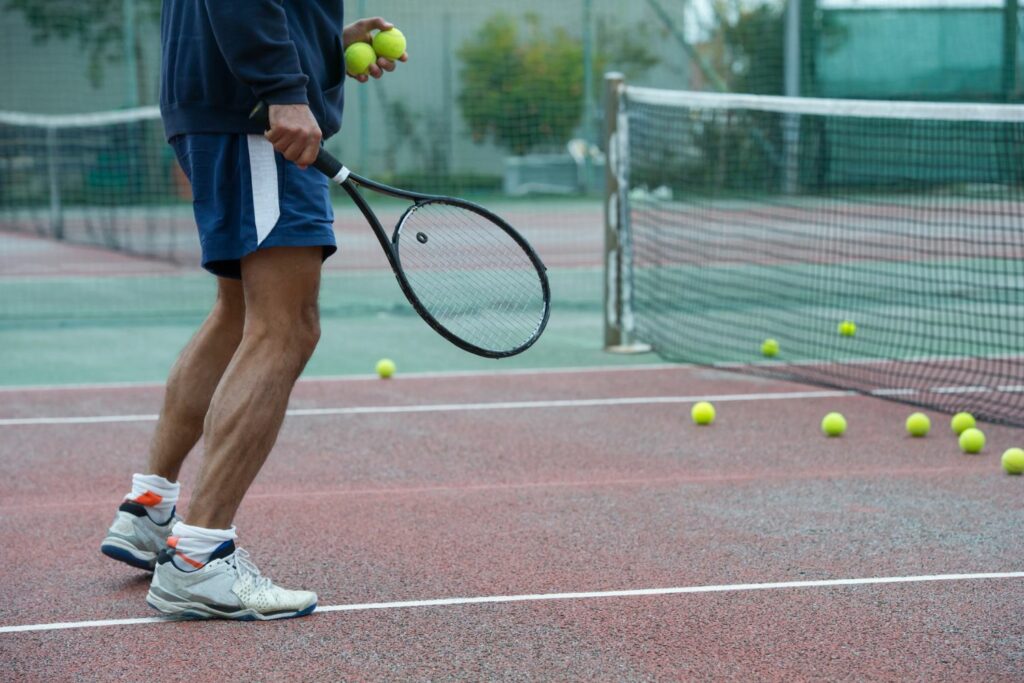
Kevlar strings are an excellent option for big hitters with an aggressive approach to the game that doesn’t want to worry about breakages or replace strings during the match. These strings can also generate heavy spin, making it easier to go for full, powerful swings and add more depth to each shot.
The ultimate control levels allow the player to dictate where the ball will go and accurately hit targets every time. Kevlar strings are probably the best when it comes to maintaining tension. They offer a clean feeling at impact and come at reasonable prices.
As you can imagine, these strings are very uncomfortable to play with, to the point that it will feel like you are using a wooden racket instead. You will feel the harsh vibration on your arm and wrist immediately. Low power potential is another downside of the kevlar strings, so if you are a beginner is better to stay away from them and consider other options.
Advantages
- Extremely durable
- Heavy spin
- High levels of control
- Maintain tension very well
- Clean feeling
- Reasonable prices
Disadvantages
- Very harsh on the arm
- Low powered
- Stiff
Other Types of Strings
There are other different types of tennis strings for you to consider if you need more than the options above to suit your needs on the court. Hybrid strings, for example, are a great choice for those players that are looking to combine various features that otherwise wouldn’t match together.
Doing so can make natural gut last longer or kevlar strings feel more comfortable and softer. However, it would be best if you remembered that the type of string you place at the mains would impact performance or touch the most.
Composite strings are very similar in this aspect, as they are manufactured by creating different types of materials in order to mix different features. However, this dampens down the feeling of the strings, and you should expect more average playability.
These types of tennis strings don’t really excel in any category because they don’t maximize any feature. Regardless, they appeal to a wide range of players from different levels and game styles who like mixing and matching their racket’s attributes.
Tennis String Gauge
After picking the kind of material that suits you best, it’s time to think about other important aspects of the strings. The gauge level is one of them, as it directly impacts performance and touch. When talking about tennis string gauge, you should know that it refers simply to the thickness of the strings.
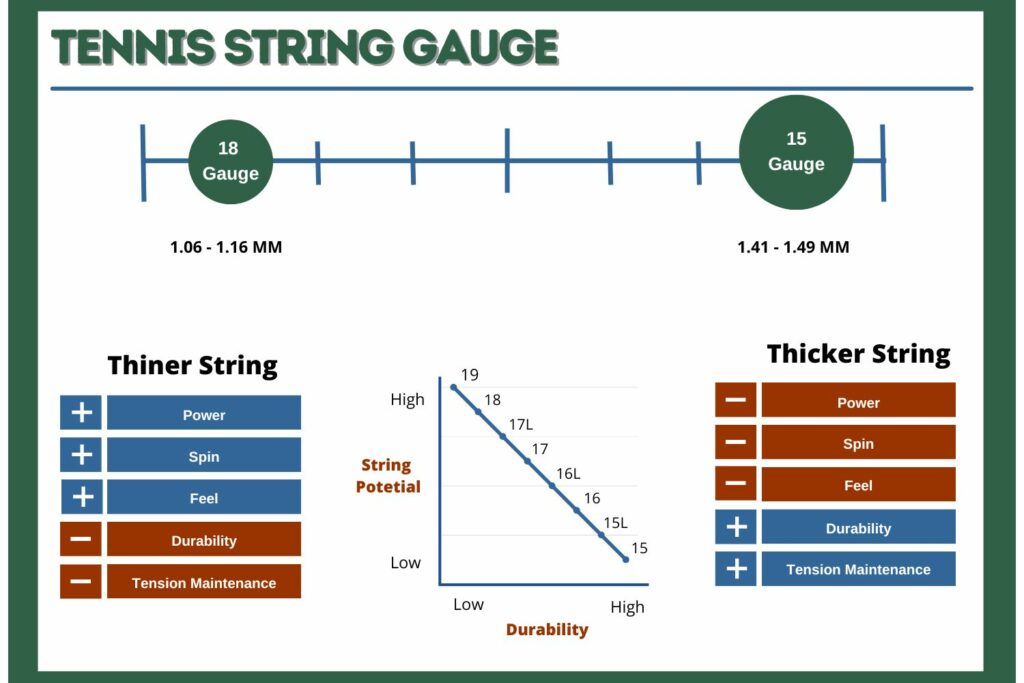
There is not yet a universally accepted gauge chart, so you should always check the manufactures instructions on the package before making a purchase. In the USA, the higher the gauge number is, the thinner the string. The vice versa is true for the rest of the world, which can make it confusing for beginners.
Thinner strings can generate more spin and move better, allowing more dwell time for the ball. These types of strings also enhance the feeling and are more comfortable to play with, but they do tend to break easier. On the other side, thicker strings provide excellent durability and power levels, but the feeling is more muted and harsh on the arm.
There is no right answer on what gauge level to choose, so make to prioritize your own needs before deciding.
Tennis String Tension
Tennis string tension refers to how tight the strings are set on the racket’s frame. This is often overlooked but is a key attribute, as it can help maximize features and overall performance. The tension rate is expressed in kg or lbs, and most manufacturers would recommend an ideal rate so that you can adjust the tension accordingly.
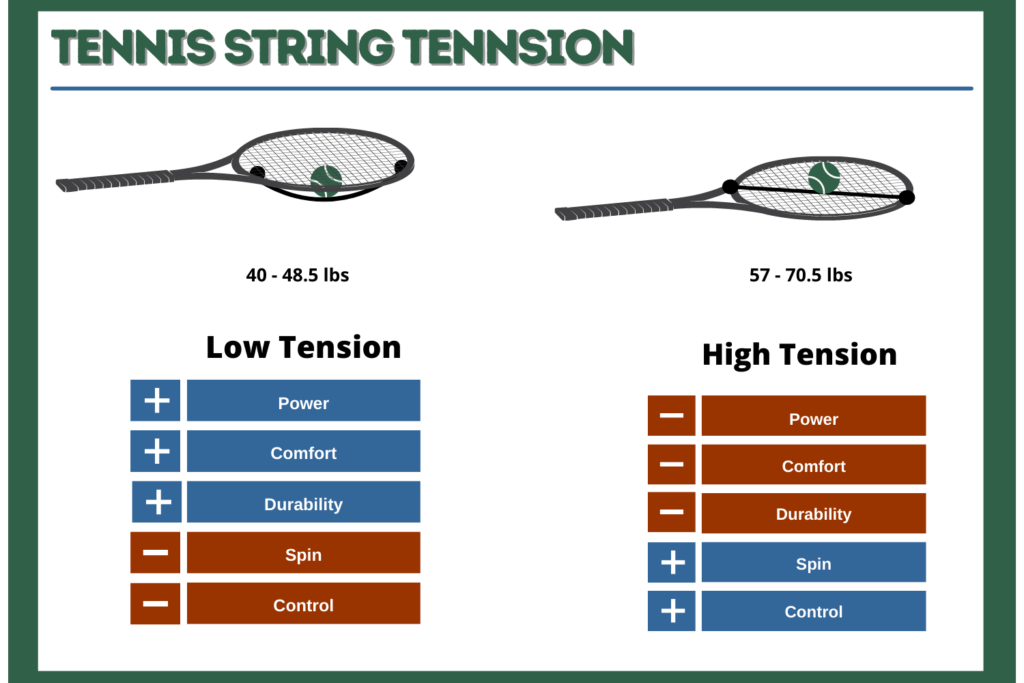
Usually, the tighter the strings are pulled on the frame, the more control it provides. Higher tension also offers heavy spin and crazy spin but makes the strings more prone to breakage and other damage.
On the other side, lower tension rates provide more power and durability, but that comes with the expense of spin and speed. When deciding on tension level rates, you should consider the strings materials, your levels, style play, etc.
Restringing Your Tennis Racket
The restringing process can often be stressful for players, but it is a necessary skill to have, as it is an unavoidable need. Two key factors play the most important role, one determining how often you’ll have to restring your tennis racket.
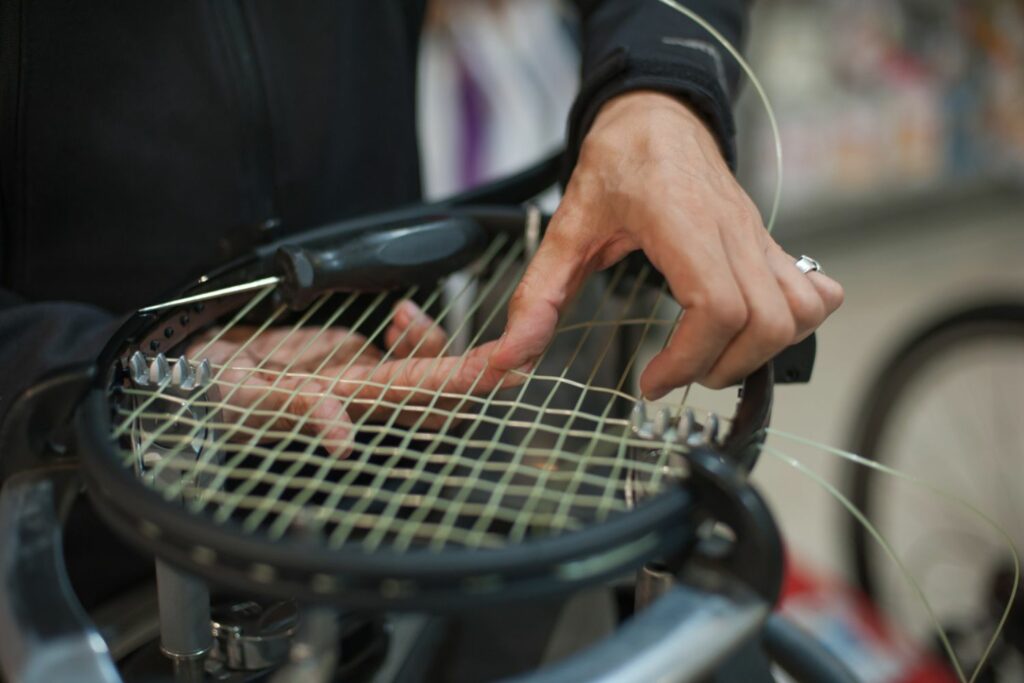
- Tension loss. It’s normal for the strings to lose tension with time due to constant hits. Even if they don’t break, they will still be affected by smaller damages, frequency of play, or weather elements, such as humidity or sun exposure. The best way to slow down this process is by favoring certain string materials, such as kevlar or multifilament, maintaining lower tension rates, and going for thicker gauge levels.
- Durability. The explanation is very simple. The more durable and resistant the strings, the fewer times you’ll have to restring the racket or try to replace them altogether. As explained above, durability depends on the different types of tennis string material and gauge levels.
FAQs
If you’re wondering what is the strongest type of tennis string or what kind of strings do pro tennis players use, read on for answers to this and other frequently asked questions.
Q: What strings Roger Federer uses?
Roger Federer plays with a half set of Wilson Natural Gut and a half set of Luxilon Alu Power Rough 16L strings. These high-quality strings are known for their exceptional durability, power, and spin potential, making them a popular choice among pro tennis players.
Q: What kind of strings do pro tennis players use?
There is no one answer to this question, as different players have different preferences. Many professional tennis players opt for high-quality multifilament or natural gut strings because of the enhanced feel and durability they provide. However, other top players may prefer thicker gauge strings that offer more power and spin potential.
Q: Is 16 or 17 gauge tennis string better?
There is no definitive answer to this question, as it depends on your preferences and style of play. Generally speaking, thicker gauge strings tend to offer more power potential and durability, while thinner gauges are better for spin and feel. Therefore, you should always consider the type of string material, gauge level, and tension rate when selecting a new tennis string.
Q: What is the strongest tennis string?
There is no single answer to this question, as the strength of a tennis string depends on many factors, including its material composition, gauge level, and tensile durability. However, some types of strings are considered stronger than others due to their enhanced durability or resistance to tension loss. Common materials used in top-tier tennis strings include kevlar, multifilament, and monofilament.
